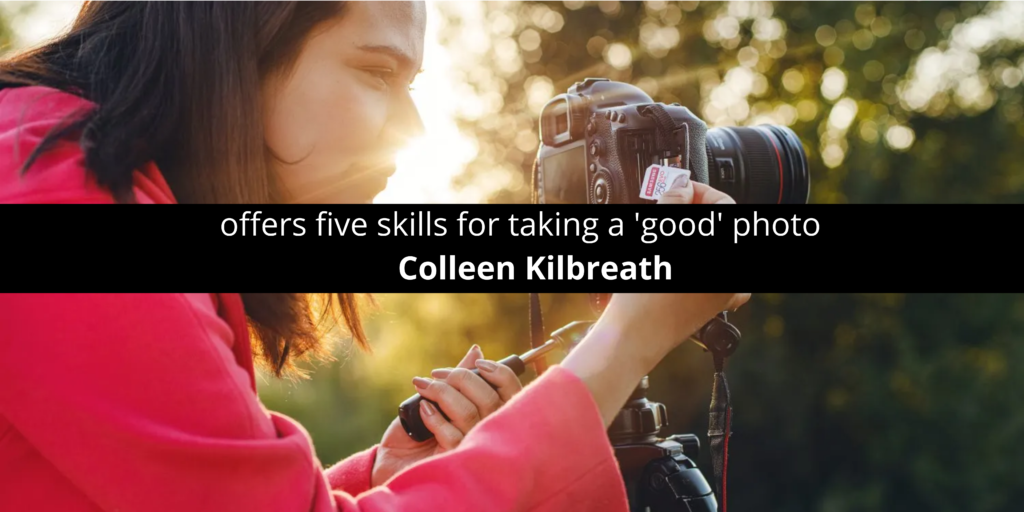Colleen Kilbreath offers five skills for taking a ‘good’ photo


Not just any picture is worth a thousand words.
Despite what the cliche says, capturing a photo that will engage, inspire, and spark dialogue isn’t as simple as snapping a few buttons. A “good” photograph requires a mindful approach and practiced techniques.
Colleen Kilbreath has spent most of her life developing these skills. Majoring in both studio art and self-design, the Vermont artist is also an avid photographer who aims to depict realism in the world around her.
While dissecting what makes a “good” picture is highly subjective, she draws on her own experience to share five core concepts. Working in tandem, these skills will elevate any photo into one worth discussing.
Composition
What will be featured in your photo? Although this seems like an obvious question, the answer requires deliberate thought. This includes not only the main subject but anything in the foreground or background. Also, ask yourself where and how the subject will be displayed. Consider what will be left out of the frame also. Known as the rule of thirds, positioning your subject in the center of the image portrays symmetry. Play with zooming in, panning out, or moving the focus off to the side to draw attention elsewhere. For Colleen Kilbreath, the key is always practice. Try different techniques and copy compositions from other works that you find appealing.
Focus
Focus refers to altering a camera’s aperture to influence the depth of field. It’s mostly a technical skill. Explore using this to create clarity or blurriness. By doing so, you will draw attention to specific areas. Much like composition, use this to eliminate distracting elements for your audience.
Exposure
Happening internally within the camera itself, exposure is the amount of light within a single photograph. For many casual photographers, the built-in, automatic setting controls this. Yet, Colleen Kilbreath again stresses the need for trial and error. While this should be used minimally, intentionally overexposing or underexposing an image will influence its mood. Restrict exposure to portray a somber, ominous tone. Let in more light for an airy look.
Light
Another way to impact lighting is to use an external source. When used, it’s all about direction. Hitting an item or individual with direct lighting results in equal exposure. Add sidelights to build drama through shadows. Despite being difficult to master, backlighting can produce a subject that appears illuminated or glowing. Experiment with different times of day and positioning to yield soft, hard, or diffused lighting.
Timing
It just takes one moment to preserve something special. Any planning will be meaningless if you can’t capture the right moment. For action shots, this requires a tremendous amount of practice. Colleen Kilbreath encourages novices to try the burst mode. Built into most cameras, this feature snaps a series of quick photos, which helps ensure you get the shot.
